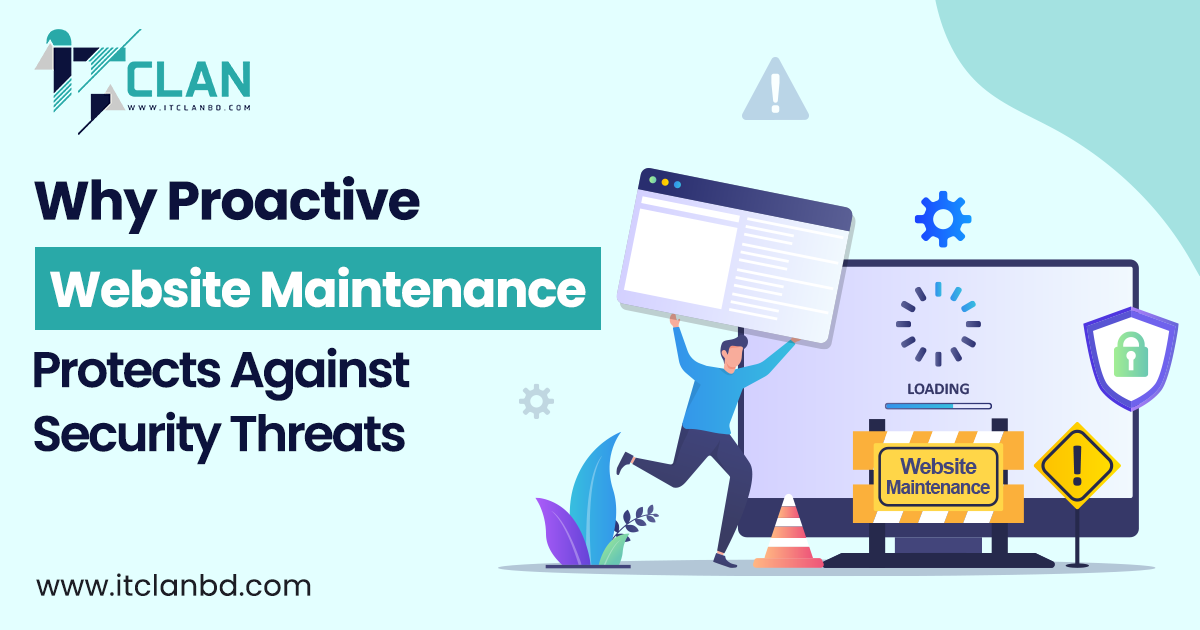
Our Blog Details
Home / Our Blog DetailsEver clicked on an app only to find it crashes, freezes, or just doesn’t work right? It’s frustrating, right? Now imagine your customers feeling that way about your software. That’s where QA testing comes in—it’s the unsung hero that makes sure your software runs smoothly and keeps users happy. If you’re wondering how to deliver top-notch software that people love, this blog is for you.
We’ll break down what QA testing is, why it’s a big deal, and how it ensures your software is both high-quality and user-friendly. Let’s dive in!
Let’s dive in.
Let’s start with the basics: What is QA Testing?
QA stands for Quality Assurance.
QA testing is like the final quality check before your software hits the market. It’s like a safety net for software. Before a product goes live, it’s tested thoroughly to find bugs, glitches, or usability issues. Mainly, it involves testing, reviewing, and validating the software to make sure it’s:
- Free from bugs and errors
- User-friendly and functional
- Secure and reliable
- Meets business and user requirements
QA (Quality Assurance) is part of the broader software development process. It ensures the product meets predefined quality standards and user expectations.
Think of it this way: If software were a car, QA would be the mechanic testing the brakes, checking the engine, and making sure the doors don’t fall off before handing you the keys.
QA, QC, and Testing – Are They All the Same?
Not quite. Here’s a quick breakdown:
- QA (Quality Assurance): Focuses on the process. It’s proactive—preventing bugs.
- QC (Quality Control): Focuses on the product. It’s reactive—identifying bugs.
- Testing: The actual execution of tests to find bugs and issues.
So, QA is the strategy, testing is the action, and QC is the checkpoint.
Types of QA Testing That Make All the Difference
Different software, different challenges. That’s why QA testing isn’t one-size-fits-all. Let’s look at the most common types:
- Manual Testing: Testers manually interact with the app or site—just like a real user. It’s best for UI/UX testing, exploratory tests, or features that require human judgment.
- Automated Testing: Scripts are written to run repetitive tests automatically. Great for regression testing, performance checks, or large applications. It’s fast, consistent, and reduces human error.
- Functional Testing: This checks if every feature works according to the requirement. It answers: “Does it do what it’s supposed to?”
- Performance Testing: Is your app fast under pressure? Can it handle thousands of users at once? Load and stress testing help answer these questions.
- Security Testing: Vital for financial apps or anything with sensitive data. QA checks for vulnerabilities and ensures data protection.
- Usability Testing: Is the interface intuitive? Can users find what they need easily? This type focuses on the overall user experience.
- Regression Testing: When new features are added, QA ensures the existing ones still work. It’s like making sure adding a new floor to a house doesn’t cause the roof to collapse.
As well as QA testing, you can also take post-deployment maintenance and support services to prevent outages and have a smooth and quality website or software.
How QA Testing Ensures Software Quality
1. Finding and Preventing Problems Early
QA testing helps catch and fix issues early in the development process. This includes things like broken features, slow performance, security risks, or confusing designs. Fixing problems early saves time and money later.
2. Making Sure Everything Works
QA makes sure every part of the software does what it’s supposed to do. It checks that all features work correctly and meet the requirements.
3. Testing Speed and Growth
QA tests how well the software runs under pressure—like when lots of people use it at the same time. It also checks if the software can grow as your user base grows.
4. Keeping It Safe and Stable
QA looks for any security issues and makes sure the software is reliable. This helps prevent crashes, bugs, or data loss after launch.
5. Following the Rules
QA also checks that your software follows any rules or standards for your industry, such as data protection laws or healthcare regulations.
Just as QA testing keeps your software flawless for customers, spotting and fixing the common eCommerce mistakes is key to turning visits into sales—check out our Top eCommerce Mistakes to Avoid for more insights.
How QA Testing Improves User Satisfaction
1. Making Sure the Software Meets User Needs
QA checks that the software does what users expect and solves their problems. This helps create a product that’s really useful and valuable.
2. Creating a Better User Experience
Through usability testing, QA ensures the software is easy to use, simple to navigate, and enjoyable for users.
3. Reducing User Frustration
By finding and fixing bugs and confusing parts before the software launches, QA helps prevent users from getting frustrated.
4. Building Trust in Your Brand
When your software works well and is easy to use, users trust your brand more. This leads to happier customers and more positive recommendations.
5. Supporting Users After Launch
QA also helps quickly find and fix problems reported by users after release, keeping their experience smooth and enjoyable.
While QA testing ensures your software runs smoothly and your users stay happy, it’s just as important to avoid digital marketing mistakes that can hurt your growth—learn more in our guide on 10 Digital Marketing Mistakes to Avoid for Your Business Growth.
The QA Testing Process: How It Works
Wondering how QA testing actually gets done? Here’s the step-by-step rundown:
- Requirement Analysis: Testers review your project goals to understand what the software needs to do.
- Test Planning: They create a strategy, picking the right tools and defining what to test.
- Test Case Design: Testers write detailed scenarios to cover every feature, like “What happens if a user enters an invalid email?”
- Test Execution: They run tests, log any issues, and work with developers to fix them.
- Reporting: Testers share clear results with the team, highlighting what’s working and what needs tweaking.
- Continuous Improvement: Feedback from each round makes the process better for the next.
This process ensures your software is thoroughly vetted before it reaches users.
Why Skipping QA Leads to Disaster (And Angry Users!)
Some businesses try to cut costs by skipping QA. Big mistake. Here’s what you risk:
1. Crashes and Freezes
Your app crashes or freezes in the middle of use. Users get frustrated, delete the app, and leave bad reviews.
2. Broken Features
Features don’t work as promised. Forms won’t submit, search results are wrong. Users feel tricked and lose trust.
3. Slow Performance
Pages load slowly, buttons lag or don’t respond. Users get impatient and switch to faster competitors.
4. Confusing Navigation
Menus are hard to use and users can’t find what they need. They give up and leave your app.
5. Security Problems
Data leaks or security flaws expose user information. This causes loss of trust, legal troubles, and big damage to your reputation.
6. Negative Reviews and User Loss
Frustrated users spread the word. Your ratings drop, and loyal customers stop using your software. It’s tough to bounce back.
The cost of skipping QA isn’t just fixing bugs later—it’s losing customers, damaging your brand, wasting marketing efforts, and risking legal issues. QA testing is your best defense against all of this. Think of it as insurance that protects your app, your users, and your business reputation.
Best Practices for Effective QA Testing
Want to make your QA process top-notch? Follow these tried-and-true practices:
- Start early (Shift Left Testing) – Don’t wait till the end.
- Mix manual and automated testing – Both have unique benefits.
- Write detailed test cases – Clear documentation avoids confusion.
- Test in real devices/environments – Simulations aren’t always enough.
- Do frequent regression tests – Especially after updates.
- Get user feedback – Actual user insights help refine tests.
Need a Reliable QA Partner? Trust ITclan BD
At ITclan BD, we understand the real-world impact of flawless software. That’s why we offer end-to-end QA testing & support services that ensure your product is secure, bug-free, and user-approved.
Here’s what sets us apart:
- Custom QA strategies tailored to your product
- Manual + automated testing options
- Security and performance-focused testing
- Support for SaaS, eCommerce, mobile apps, and enterprise software
- Transparent communication and timely delivery
Whether you’re launching a new app or improving an existing one, ITclan BD is your trusted QA partner to ensure smooth performance and happy users.
Wrap-Up
Quality isn’t optional, it’s essential. In today’s competitive market, software quality can make or break your product. So, you can’t skip QA testing. It ensures your software works, your users are happy, and your brand is trusted. Don’t treat QA as an afterthought. Make it part of your foundation.
Because when your software works perfectly, your users notice and they stay.
Frequently Asked Questions
Quality assurance ensures software quality by identifying and fixing issues early, improving user experience, and reducing costly post-release bugs or crashes.
Yes! By identifying issues early, QA testing reduces development costs, avoids rework, and speeds up time-to-market.
QA (Quality Assurance) processes play a crucial role in improving software quality by systematically identifying and fixing bugs, ensuring the product works as expected, and meeting both user and business requirements. Through various testing methods, QA helps catch issues early, reduce development costs, and deliver a reliable, user-friendly, and high-performing product.
The cost of QA testing depends on the project’s complexity, testing methods (manual or automated), and the size of the application. On average, QA testing can range from $15 to $75+ per hour, or be included as part of a full software development package. Investing in QA early can save thousands by preventing post-launch bugs, user complaints, and costly rework.
Popular QA testing tools include Selenium, TestRail, JIRA, Appium, Postman, and JUnit for automation, test management, and bug tracking.
Recent Blog Post
Quality Is Our Strength

How DevOps Automation Is Revolutionizing the Software Develo...
Software development has changed a lot in the past decade. Gone are the days when teams waited weeks or even months to release updates. Today, users expect fast updates, bug fixes, and new ...

Why Proactive Website Maintenance Protects Against Security ...
Your website is like your digital shop, open 24/7 for the world. But just like you wouldn’t leave your physical shop unlocked overnight, you also shouldn’t leave your website unprotecte...

Web Development Trends That Will Dominate the Next Decade...
The internet never stands still—and neither does web development. If you’ve been following the tech world, you already know that websites today look and behave nothing like the ones we ...

